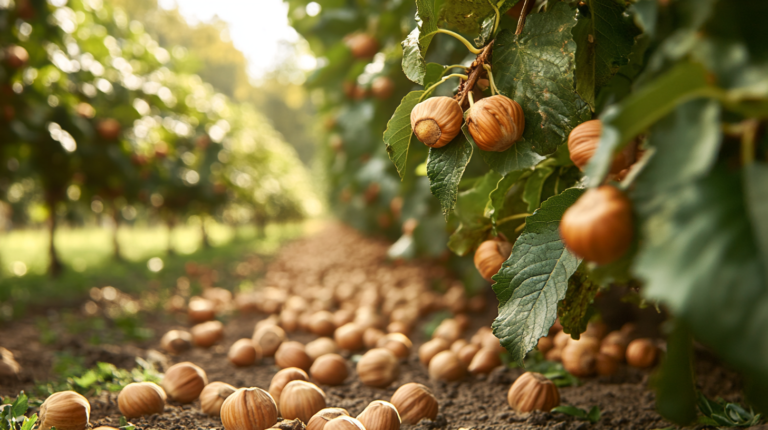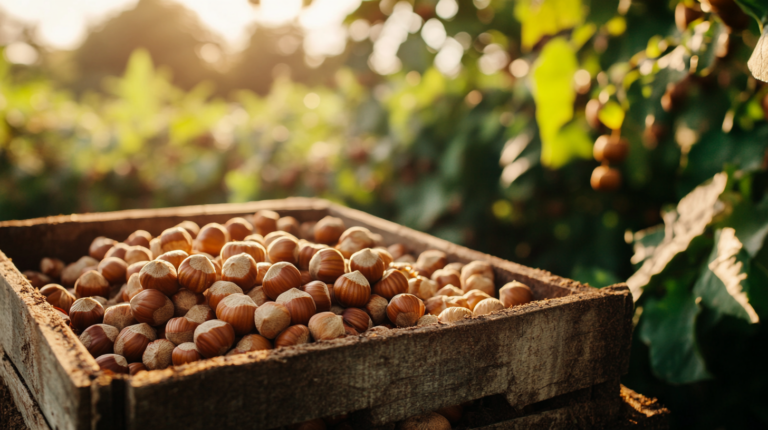The Best Soil Types for Growing Hazelnuts: A Comprehensive Guide
Best Soil Types for Growing Hazelnuts: Expert Insights
Growing hazelnuts, also known as filberts, requires selecting the right soil to ensure healthy growth and high yields. While hazelnuts aren’t overly demanding, specific soil conditions can significantly enhance their productivity. This guide delves into the ideal soil types for hazelnuts, including soil texture, drainage, pH levels, nutrient needs, soil depth, and preparation.
Ideal Soil Texture and Drainage for Hazelnuts
Hazelnuts flourish in well-drained, loamy soils with a sandy-clay or clay-loam texture. These soils balance moisture retention and aeration, ensuring the roots receive both water and oxygen.
- Soil Composition: The ideal soil composition for hazelnut cultivation should be:
- 15-20% clay
- 20-30% fine sand
- 15-20% colloids
- 30-50% coarse sand
This composition ensures good drainage while retaining sufficient moisture and nutrients. Avoid poorly drained or waterlogged soils, as they can lead to root rot and other diseases.
Optimal Soil pH and Nutrient Requirements
Hazelnuts can grow in soils with pH levels from slightly acidic (pH 5.0) to slightly alkaline (pH 9.0). However, the optimal pH range is between 6.8 and 7.3.
- pH Adjustment: If the soil pH is too low or too high, adjust it accordingly. For acidic soils (pH below 5.0), use lime (calcium carbonate) to raise the pH. For alkaline soils (pH above 9.0), use sulfur or other acidifying agents.
- Nutrient Requirements: Hazelnuts prefer soils with moderate fertility levels. The ideal chemical composition includes:
- Humus: 3%
- Mineral nitrogen: 0.12-0.22%
- Easily digestible phosphorus (P2O5): 6-8 mg/100g
- Easily digestible potassium (K2O): 8-12 mg/100g
- Easily digestible magnesium (MgO): 80-120 mg/100g
- Calcium carbonate (CaCO3): Up to 5%
If nutrient levels are not optimal, apply organic matter (e.g., compost or manure) or fertilizers.
Soil Depth and Preparation
Hazelnuts have extensive root systems and need deep, well-prepared soils. A minimum soil depth of 50-60 cm (20-24 inches) is recommended, with deeper soils preferred for grafted varieties.
- Soil Preparation: Prepare the soil thoroughly before planting. Deep plowing or subsoiling to a depth of 60 cm (24 inches) or more improves drainage. Perform this several months before planting to allow the soil to settle.
Practical Steps for Preparing Hazelnut Soil
- Testing Soil: Conduct a soil test to determine pH and nutrient levels.
- Adjusting pH: Apply lime or sulfur based on soil test results.
- Adding Organic Matter: Incorporate compost, aged manure, or green manure to improve soil structure and fertility.
- Deep Plowing: Break up compacted layers to enhance root penetration.
- Creating Raised Beds: In areas prone to waterlogging, consider raised beds for improved drainage.
Case Studies: Soil Preparation in Different Regions
- Pacific Northwest, USA: Heavy clay soils are improved with organic matter and cover crops.
- Turkey: Terracing and contour planting manage soil erosion and optimize water retention.
- Southern Europe: Maintaining high calcium carbonate levels benefits hazelnut growth.
Common Soil-Related Problems and Solutions
- Compaction: Use deep tillage and add organic matter.
- Nutrient Deficiencies: Conduct soil tests and apply fertilizers to address deficiencies.
- Poor Drainage: Create raised beds, improve drainage channels, and plant cover crops.
Advanced Techniques for Soil Management
- Microbial Inoculants: Enhance nutrient uptake with beneficial microbes.
- Cover Crops: Improve soil fertility and prevent erosion with cover crops like clover or rye.
- Mulching: Retain soil moisture, regulate temperature, and suppress weeds with organic mulch.
Long-Term Soil Health
Maintaining soil health is crucial for sustainable hazelnut production. Regular monitoring and management ensure continued fertility and productivity.
- Soil Testing: Regularly test soil to monitor pH, nutrient levels, and organic matter content.
- Organic Matter Addition: Continuously add organic matter through compost, manure, or cover crops.
- Crop Rotation: Implement crop rotation or intercropping with legumes to improve soil health.
Conclusion
Selecting and preparing the right soil for hazelnuts is vital for achieving healthy growth and high yields. By focusing on soil texture, drainage, pH, nutrient levels, and proper preparation techniques, growers can create an ideal environment for hazelnuts. Whether you are a commercial grower, researcher, or hobbyist gardener, understanding soil management will significantly impact your success.
References
- Rasadnik Agromax: Selection and Preparation of Plots for Raising Hazelnut Plantations
- Arad Branding: Hazelnut Soil Growing Conditions for Business
- GrowVeg: A Guide to Growing Your Own Hazelnuts
- Z Nutty: How to Plant a Hazelnut Orchard
- Planet Natural: Hazelnut Tree






